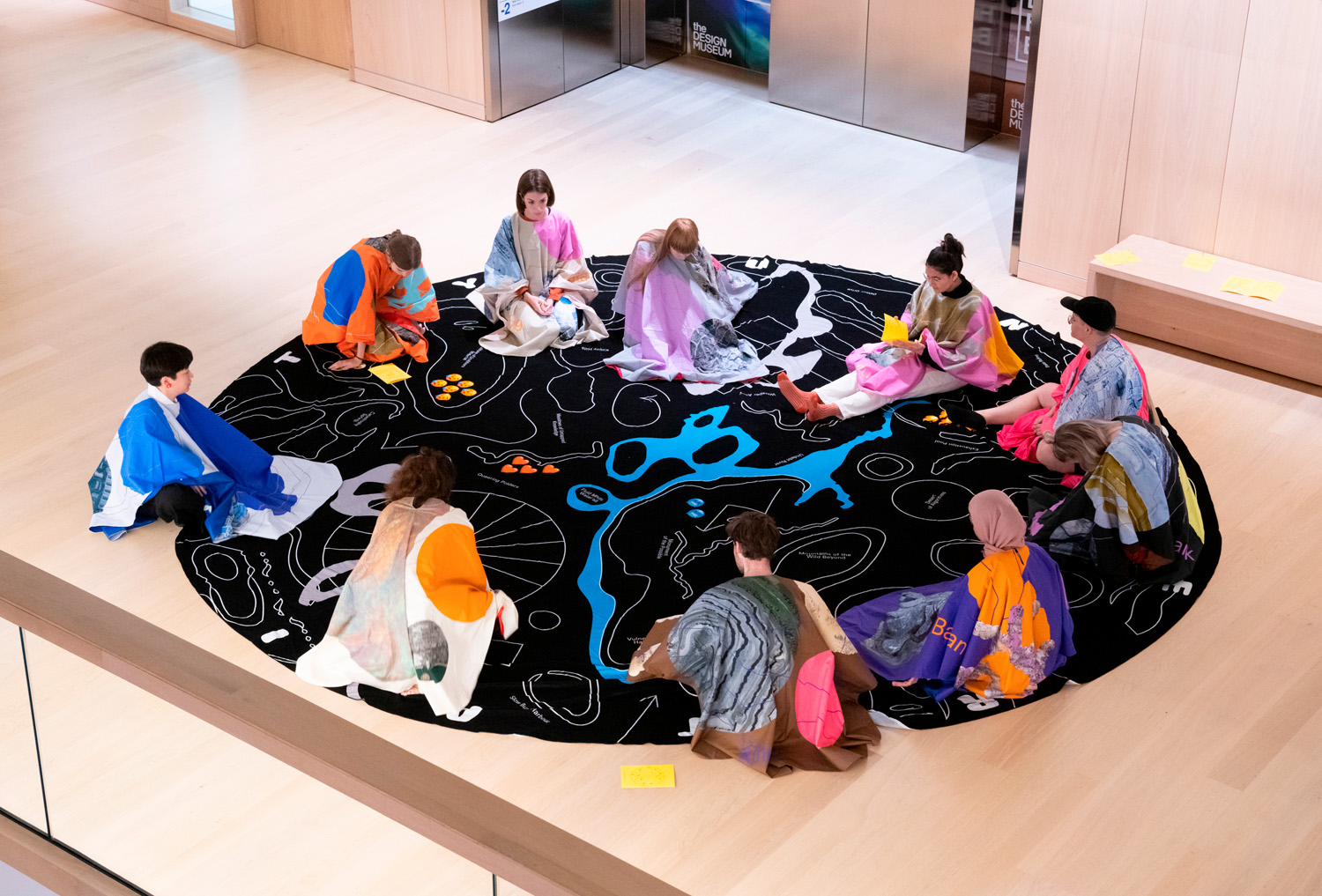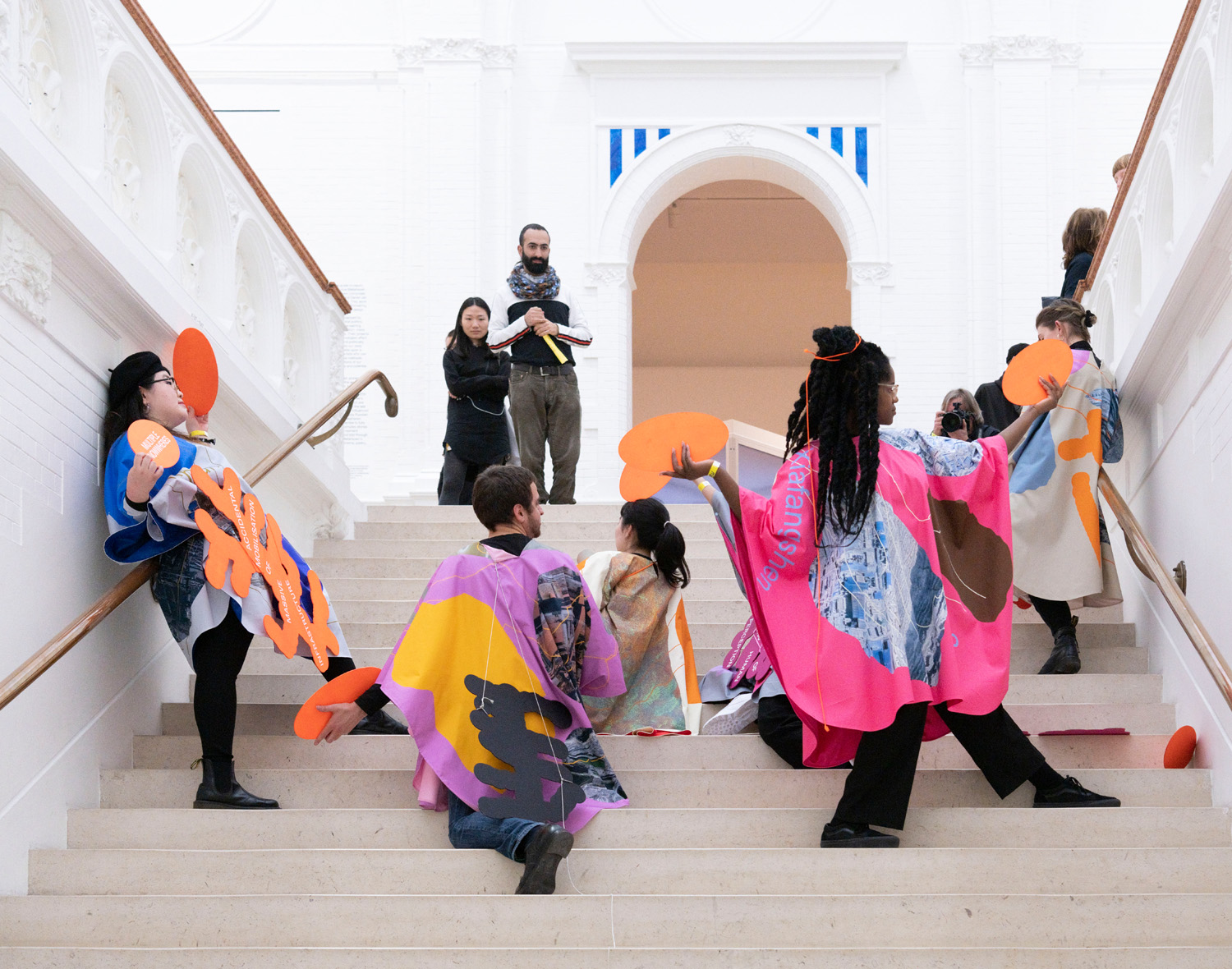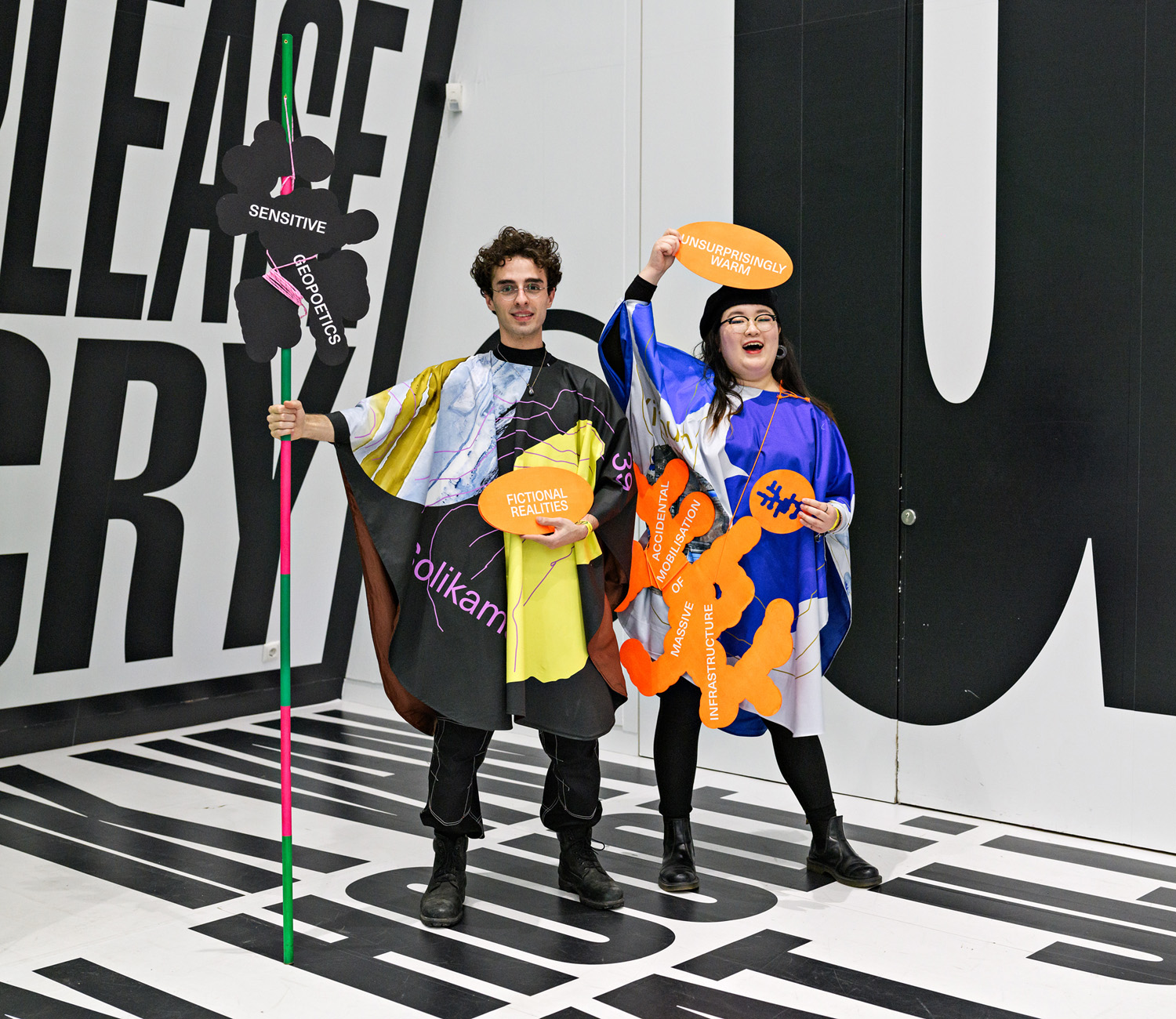Back Office encounters graphic designer Tereza Ruller, who is the cofounder, with her partner Vit Ruller, of the Dutch design studio The Rodina, to discuss the creative challenges within virtual environments. Their practice of “performative design” consists of addressing societal issues through site-specific interactions between participants using a critical approach. The Rodina also explores the possibilities of three-dimensional spaces for event-based contexts, and proposes alternatives to commercial metaverses and photorealistic video games.
Tereza Ruller Hi! I am Tereza Ruller, cofounder of The Rodina, which, in my mother tongue [Czech] means “family.” My partner Vit and I think of ourselves as the smallest unit of a family because we are also a couple, partners in life and work. We come from different backgrounds and different disciplines. Vit studied psychology and architecture; my background was in the arts. I was interested in Fluxus, in performance, and in conceptual art and video. We started working together with theaters in the Czech Republic and did a lot of VJing shows. Then we realized that communication design was what we actually wanted to do. Not the static part of print design, but motion, creating experiences, and working live with people. So we moved to the Netherlands to study graphic design at The Royal Academy of Art in The Hague (KABK). Then, after a short break, I entered the master’s program at the Sandberg Institute in Amsterdam.
We often work together: we sit next to each other and debate on what goes where, how this moves, how that behaves, etc. Technically speaking, Vit is the expert in programming but I only really have the basics. However, we make conceptual and visual decisions together. So it’s not like I only do esthetics and he just codes.
TR More than notions of space, we were interested in working with people (and people, of course, come with their physical bodies!).

 They physically need to come to specific locations to attend performances. I wouldn’t say it’s a limitation, but it’s really exciting and inspiring to try to overcome these physical constraints with virtual spaces. When you start thinking about VR environments, a lot of questions arise: how can you navigate with these avatars? How do you work with them virtually? Our main interest is in working with the audience, with people, and focusing on collaboration in physical spaces. How can we cultivate the feeling of coming together that happens when performing? How can we transfer that into virtual space? These were huge questions that we explored when we did some experiments during the Covid lockdowns. During that time more clients came to us because they were desperate due to the cancelling of music events and festivals. We wondered how we could recreate a club atmosphere online, so people could still have the feeling of dancing in a crowd, which is totally different from being on Zoom or watching a stream!
They physically need to come to specific locations to attend performances. I wouldn’t say it’s a limitation, but it’s really exciting and inspiring to try to overcome these physical constraints with virtual spaces. When you start thinking about VR environments, a lot of questions arise: how can you navigate with these avatars? How do you work with them virtually? Our main interest is in working with the audience, with people, and focusing on collaboration in physical spaces. How can we cultivate the feeling of coming together that happens when performing? How can we transfer that into virtual space? These were huge questions that we explored when we did some experiments during the Covid lockdowns. During that time more clients came to us because they were desperate due to the cancelling of music events and festivals. We wondered how we could recreate a club atmosphere online, so people could still have the feeling of dancing in a crowd, which is totally different from being on Zoom or watching a stream!
When Mozilla Hub…